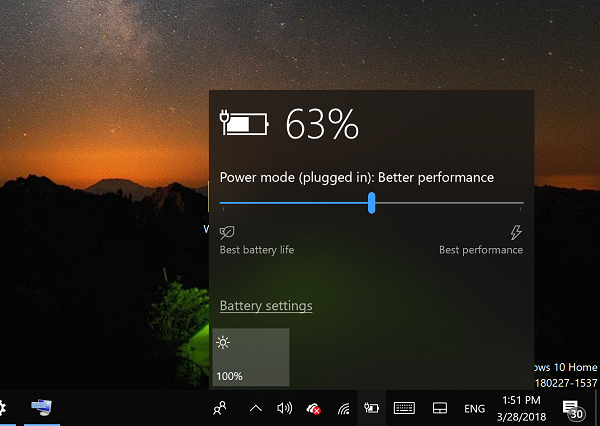A Windows 10 laptop’s battery life is affected by many factors including how long you have been using it and other heat-related factors. On the other hand, by not letting your battery to complete its run 100% to 0%, you can obscure your battery meter, and it can decrease the operational life of the battery more quickly. As a result, to make sure that your battery stays in best shape, you should calibrate it at regular intervals. So here’s how you can do laptop battery calibration windows 10.
Steps to calibrate the battery of Windows Laptop
Some laptop manufacturers add laptop battery calibration software or tool inside Windows 10 so as to make it easy for the users to take care of the battery life problem. Nevertheless, these tools are not common, and so it is better to do things by yourself. Here is what you can do:
Switch your power settings
Before you start charging and discharging your laptop battery, you should change the power settings so that your laptop won’t go into sleeping or hibernating mode too quickly. Going into sleeping mode can interrupt the calibration process. To change settings:
- First, do a right-click on the battery icon on the taskbar.
- Then click on ‘Power Options.’
- Then click on ‘Change when the computer sleeps’ on the left-hand side.
- Now click the drop-down menu of ‘Turn off the display,’ and click on ‘Never.’
- Then click the drop-down menu of ‘Put the computer to sleep.’
- Choose ‘Never.’
- Then click on ‘Change advanced power settings.’
- Now click on the expand button which is next to Battery.
- Then click on the expand button near to ‘Critical battery action.’ Make sure that the section near to ‘On battery’ says ‘Hibernate.’
- Then click on the expand button of ‘Critical battery level’ option.
- Then click on the percentage value near the ‘On Battery’ option.
- Set the percentage value to the lowest and click on ‘Apply,’ then ‘Ok,’ and then ‘Save changes.’
In case you are not using the laptop as the battery discharges, set up a screensaver.
Charge the battery of your laptop
Once you are done with the ‘Power settings,’ plug in your laptop with the charger and charge the laptop until the battery level reaches 100%. Once it is fully charged, leave it be and let it cool down. It might take a few hours.
Remove the charger and let the laptop discharge
After cooling down, unplug the charging cable from the laptop. You can use the laptop during this time and make sure it doesn’t go into sleep or hibernate mode until the battery level reaches its end.
Charge the laptop battery again

When battery level reaches to the lowest and shuts off, once again plug in your laptop with charger and wait until it reaches 100%. You can use the laptop at that time if you want. When your laptop gets charged completely, you will be able to get a much precise reading of how long the battery will last.
Change the power settings again
Once all the steps of calibrating your Windows 10 laptop’s battery has been completed, you can reset your power settings the way you want it to be.













